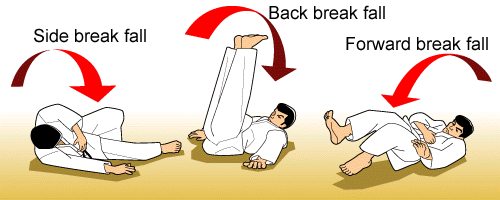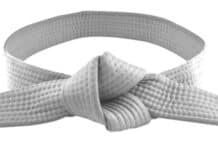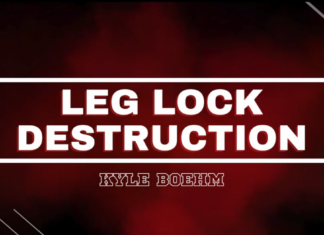
Break falls are not the first thing that spring into mind when you think of BJJ. Why would we need them when we spend most of our time on the ground anyway? Aren’t they better suited to Judo and Aikido? Well, no. BJJ break falls are a part of all warm-up sessions for a reason – we need them. And we do not just need them when we practice takedowns. They come up in almost every roll in one form or another. Trying to resist sweeps, or getting into scramble often end up in fast-paced level changes and switches in direction which ultimately, end in falling down. Knowing how to do it from any position and in any situation is an essential BJJ skill. This requires a lot of drilling and training, though, which is something most people do not really enjoy when it comes to BJJ break falls.
BJJ break falls are nothing complicated. Until you give them a try. It is amazing how many new students have real trouble grasping the basic concepts of break falls. The reason for this is obvious. Some parts of break falling go against our natural instincts. With break falls, instead of looking to land on an outstretched arm, we need to force our body to react differently without thinking. This is exactly why break falls are done each and every class as drills. Tthe best example of how you can change your body’s instinctual mechanics is comparing beginners with experienced students. A purple belt can break fall with ease, not even blinking whereas a white belt is going to clumsily end up in a pile on the ground in most cases. However, this also demonstrates that you can teach your body new movement patterns.
There’s also a hidden benefit to BJJ break falls that most people do not see at first. It’s very easy to make this one clear. Go for 50 reps of a break fall of your choice and you’ll get a workout for your whole body. Not only that but you also develop essential athletic skills while doing them. Think about a backward break fall int a handstand or to a technical stand up. These are movement patterns we see in BJJ all the time and are essential for any grappler hoping to reach the elite level.
How Break Falls Keep You Safe
The whole point of BJJ break falls, as the name suggests, is to break your fall. Damage control is by far the first and most important trait of break falls. However, as we said, it is not only about the takedown game. People in BJJ often go for modified takedowns from the knee as well. there are also a lot of scrambles that end up winding people or causing injuries to outstretched limbs. Brak falls are the easy and obvious solution to all of this grappling induced damage.

A huge one, especially for beginners is overcoming the fear of falling. This is something we have engrained in us and it can be a big obstacle in BJJ. The whole point of Jiu-Jitsu is falling down and getting up multiple times in a roll while being entangled with an opponent. It is way better to get used to falling than in training discovering you’re not ready for it in competition.
There’s also the benefit of developing grappling specific coordination. While this only used to be a benefit for kids, modern lifestyle makes it something adults need to learn as well. I can’t tell you the number of adult beginners. I’ve coached that have absolutely no idea how to move their body in a coordinated an purposeful manner.
Training BJJ Break Falls
Whenever you’re deliberate going against your body’s instinct it will take time to master a movement. The key trouble with falling is that we try to prevent from happening. And the basic notion behind BJJ break falls is accepting the fact that we’re falling on the ground. This is a very important cue in training reak falls. Never resist the motion of falling, and instead, look to go with it. Whenever you drill break falls, make sure you really fall and not try to hold yourself upright as much as possible.
The one key principle of BJJ break falls is becoming a ball. Once you accept you’re going to fall, ti would be unwise to do so by doing nothing at all., Instead, you need to focus on keeping your body compact and forming a curve so that you absorb the power of the impact.

Also, that motion of slapping the mats with the arms isn’t just for show. Keep your fingers open and use your palms to slap the mats on both sides. This negates the effects of impact from falling even more.
New Bernardo Faria DVD Review – Foundations Of Brazilian Jiu-Jitsu









































